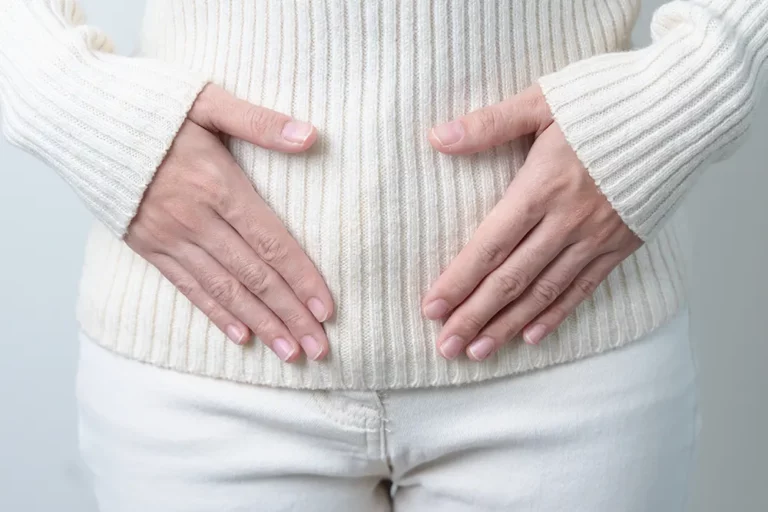Signs and reasons You Might Need a Hysterectomy
A hysterectomy is a significant surgical procedure aimed at removing the uterus. It is commonly advised as a treatment option for several conditions, including uterine fibroids, endometriosis, uterine prolapse, and cancer. This comprehensive guide delves into the various signs that indicate the necessity of a hysterectomy. Additionally it covers the different types of hysterectomy, the recovery process, and the potential changes that may occur in a woman’s health after undergoing the procedure.
Uterine Fibroids and Heavy Bleeding
Uterine fibroids, noncancerous growths within the uterus, often lead to a hysterectomy. These fibroids can trigger symptoms such as pelvic pain, heavy menstrual bleeding, and pressure on nearby organs. If alternative treatments have been explored or symptoms become severe, a recommended course of action might involve a hysterectomy.

Endometriosis and Chronic Pelvic Pain
Endometriosis, a condition where the lining tissue of the uterus grows outside its confines, often results in intense pelvic pain, painful menstrual periods, and challenges with fertility. When conventional treatments fall short in providing relief, a hysterectomy may be contemplated as a final recourse to mitigate the symptoms.

Uterine Prolapse and Pelvic Organ Support
Uterine prolapse occurs when the uterus descends into the vagina due to weakened pelvic muscles and ligaments. This can cause discomfort, urinary incontinence, and a sensation of pelvic pressure. In cases where nonsurgical treatments prove ineffective, a hysterectomy may be recommended to address the underlying pelvic organ support issues.

Uterine or Ovarian Cancer
When uterine or ovarian cancer is detected, a vital step towards treatment involves the possibility of a hysterectomy. This surgical procedure aims to eliminate cancerous tissues and halt the progression of the disease. The specific approach to the surgery varies based on the cancer stage and type, potentially involving the removal of the uterus, ovaries, fallopian tubes, and adjacent lymph nodes.
Types of Hysterectomy
Total Hysterectomy
A total hysterectomy is a major surgery where the uterus, including the cervix, is removed. It’s recommended for conditions like uterine fibroids, cancer, and heavy bleeding. Fibroids are noncancerous growths causing pain and heavy periods. Hysterectomy treats uterine or cervical cancer by removing the uterus and cervix. For persistent heavy bleeding, a total hysterectomy can bring relief.
Partial Hysterectomy
In a partial hysterectomy, only a portion of the uterus is removed, usually the upper part. This procedure may be considered when the goal is to preserve the cervix particularly in cases where the condition affecting the uterus does not involve the cervix itself.
Radical Hysterectomy
A radical hysterectomy is a complex and extensive surgical procedure that is typically performed when the underlying condition involves cancer. This procedure aims to remove the cancerous tissues and prevent the spread of the disease. During a radical hysterectomy, several structures are removed, including the uterus, cervix, the upper part of the vagina, and nearby tissues and lymph nodes.
Laparoscopic and Minimally Invasive Hysterectomies
Advancements in surgical techniques have led to laparoscopic and minimally invasive approaches to hysterectomy. These procedures involve making small incisions, using specialized instruments, and sometimes utilizing robotic assistance. They generally result in smaller scars, less post-operative pain, and faster recovery compared to traditional open surgeries.
Recovery and Changes after Hysterectomy
Post-Operative Recovery
After undergoing a hysterectomy, it is typical to encounter mild discomfort and fatigue as part of the recovery process. The duration of the recovery phase may vary, but generally, most women can anticipate resuming their regular activities within four to six weeks following the surgical procedure. Adhering to the healthcare provider’s guidance, including taking prescribed medications and granting oneself sufficient time for rest and recuperation, is crucial for a smooth recovery.
Menopausal Symptoms
The impact of a hysterectomy on hormonal balance and menopausal symptoms can vary depending on the specific type of procedure and whether the ovaries are removed. In cases where the ovaries are surgically removed (oophorectomy), women may experience an abrupt onset of menopause, characterized by symptoms such as hot flashes, mood swings, vaginal dryness, and night sweats. However, if the ovaries are preserved, menopause may occur naturally or be delayed until a later stage.
Impact on Sexual Function
Some women report improvements in sexual function and enjoyment after a hysterectomy, especially if they had experienced pain or discomfort related to conditions like fibroids or endometriosis. However, individual experiences can vary, and it may take time to adjust or explore different techniques to enhance sexual well-being. Open communication with a healthcare provider and partner is crucial to address any concerns or questions related to sexual health post-hysterectomy.
Emotional Well-being
The emotional effects of a hysterectomy can differ among women. For some, the procedure brings relief and enhanced emotional well-being, especially if they had been coping with chronic pain, heavy bleeding, or reproductive health challenges. However, others may experience a range of emotions during the recovery process. It is crucial to seek support from loved ones and healthcare providers to address and navigate the emotional aspects associated with the surgery.
Long-term Benefits
Apart from treating the underlying conditions that necessitated a hysterectomy, the procedure offers significant long-term advantages. By removing the uterus, the risk of uterine cancer is completely eliminated. Additionally, conditions such as adenomyosis, characterized by the growth of the uterine lining into the muscular wall and resulting in painful and heavy periods, can be effectively alleviated. By addressing these root problems, a hysterectomy can greatly enhance a woman’s overall quality of life.
Consult your Doctor to check signs You Need a Hysterectomy
Deciding whether a hysterectomy is the right treatment option requires a thorough discussion with a healthcare provider. They will assess the individual’s medical history, perform necessary examinations, and consider alternative treatments before recommending a hysterectomy. It is important to ask questions, voice concerns, and understand the potential risks and benefits associated with the procedure.
Recognizing the signs that indicate the need for a hysterectomy is crucial for women facing various conditions affecting the uterus. Understanding the different types of hysterectomy, the recovery process
and potential changes in health can empower individuals to make informed decisions in collaboration with their healthcare providers. A hysterectomy, while a major surgical procedure, can provide relief, improve overall well-being, and address conditions that significantly impact women’s health.
FAQs
What are the common reasons for a hysterectomy?
Common reasons for a hysterectomy include conditions such as endometrial issues, pelvic pain, abnormal vaginal bleeding, and the presence of uterine fibroids.
How is a hysterectomy performed?
A hysterectomy is a surgical procedure that can be performed through different methods including abdominal hysterectomy, laparoscopic hysterectomy, or vaginal hysterectomy. The specific approach depends on various factors, including the individual’s condition and the doctor’s recommendation .
Will I experience symptoms of menopause after a hysterectomy?
Following a hysterectomy, women may encounter post-surgical effects that resemble symptoms commonly associated with menopause. These effects can include occurrences of hot flashes, mood swings, and vaginal dryness. The likelihood of experiencing these symptoms is further heightened if the ovaries were also removed during the hysterectomy procedure.
How long does it take to recover from a hysterectomy?
As for the recovery process, the duration varies from person to person and is influenced by the type of hysterectomy performed. In general, it may take approximately six weeks to fully recuperate and resume regular activities. This period allows the body to heal and adjust after the surgery, ensuring a smoother transition back to normalcy.
Can a hysterectomy cause changes in a woman’s health?
Yes, a hysterectomy can cause changes in a woman’s health. It may result in the cessation of menstrual periods, potential changes in hormonal balance, and the possibility of early menopause in some cases.
How can I make an informed decision about a hysterectomy?
To make an informed decision about a hysterectomy, it is essential to gather information, discuss your options with your doctor, ask questions, and consider the potential benefits and risks based on your specific circumstances.

